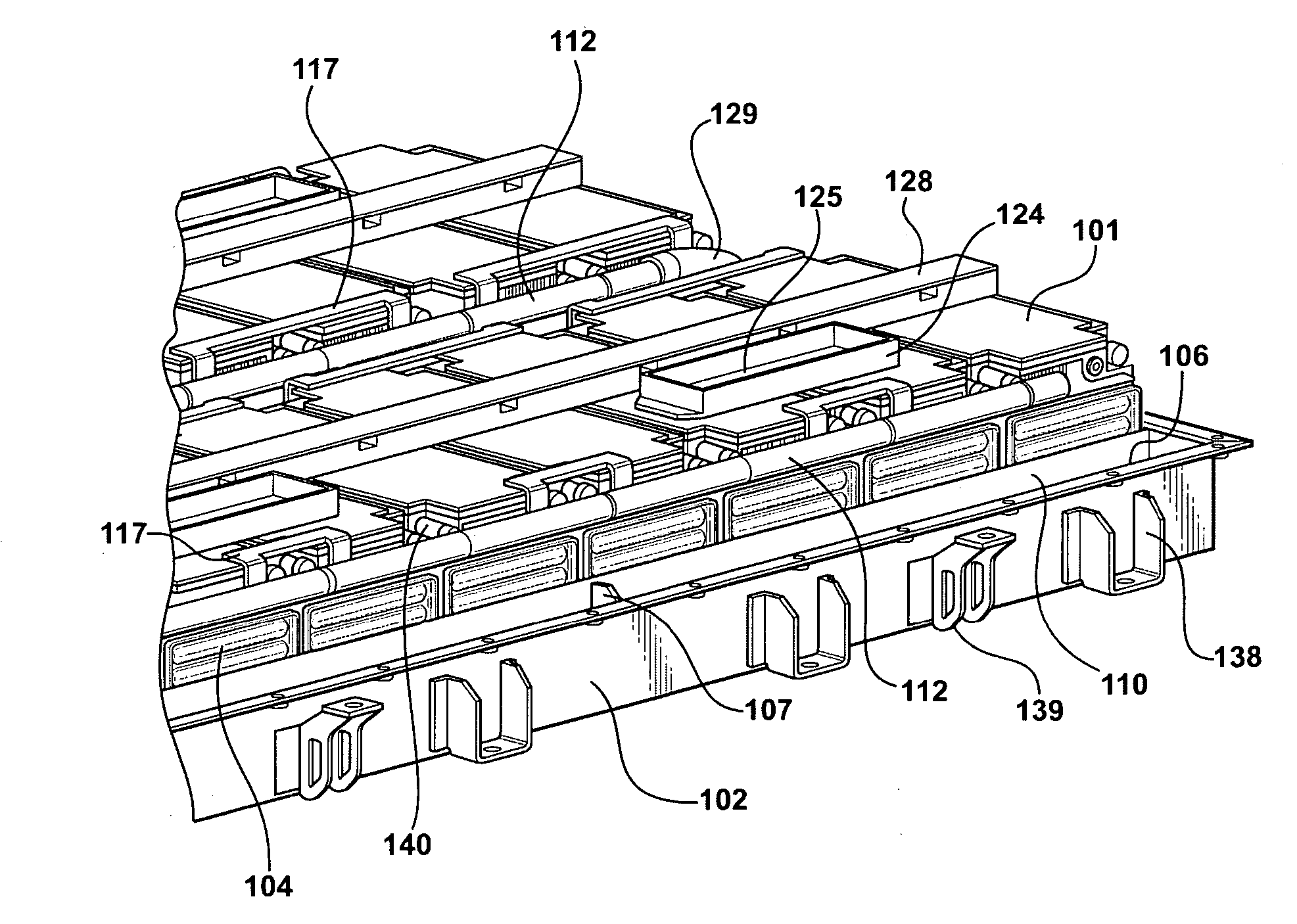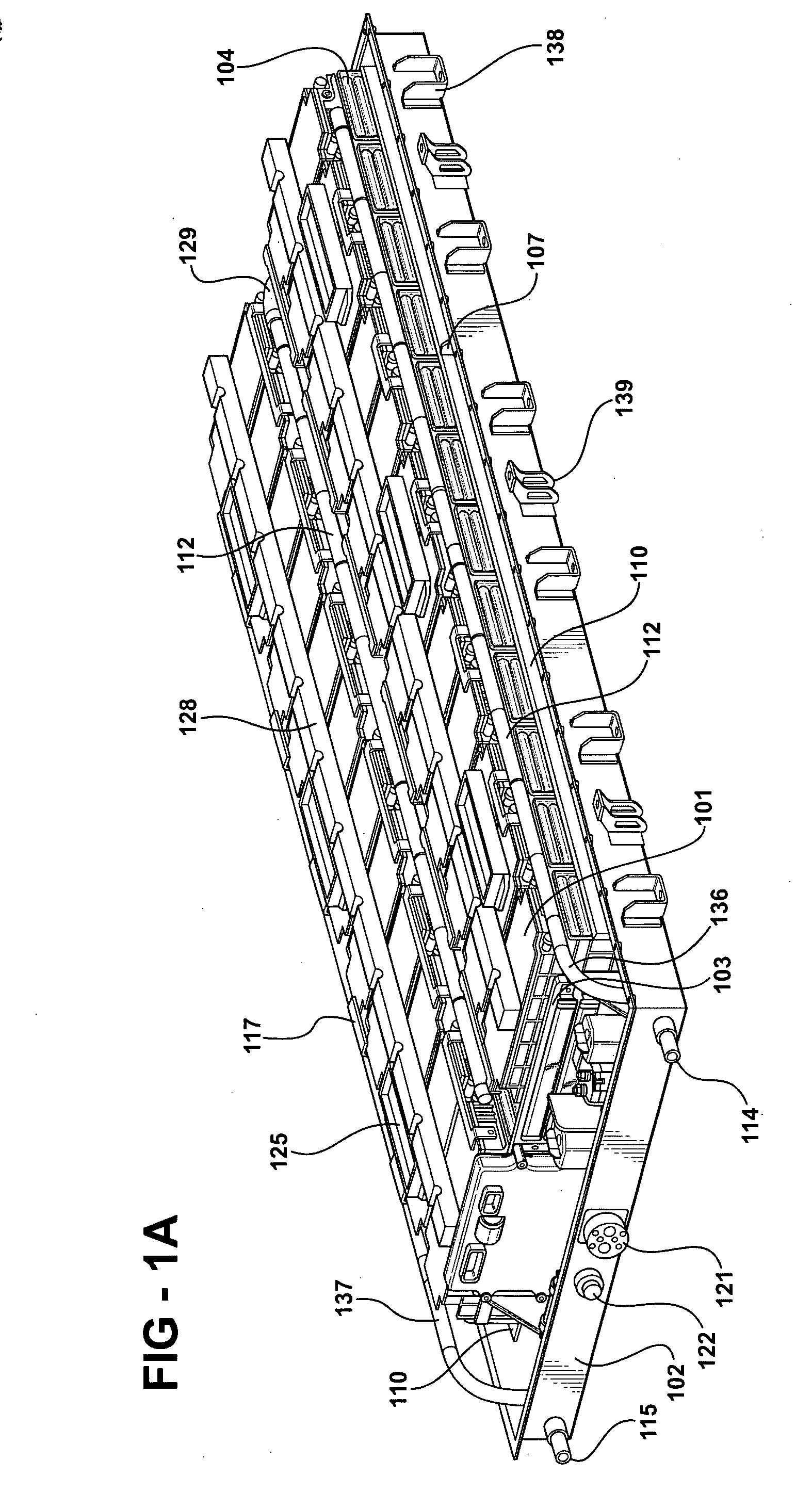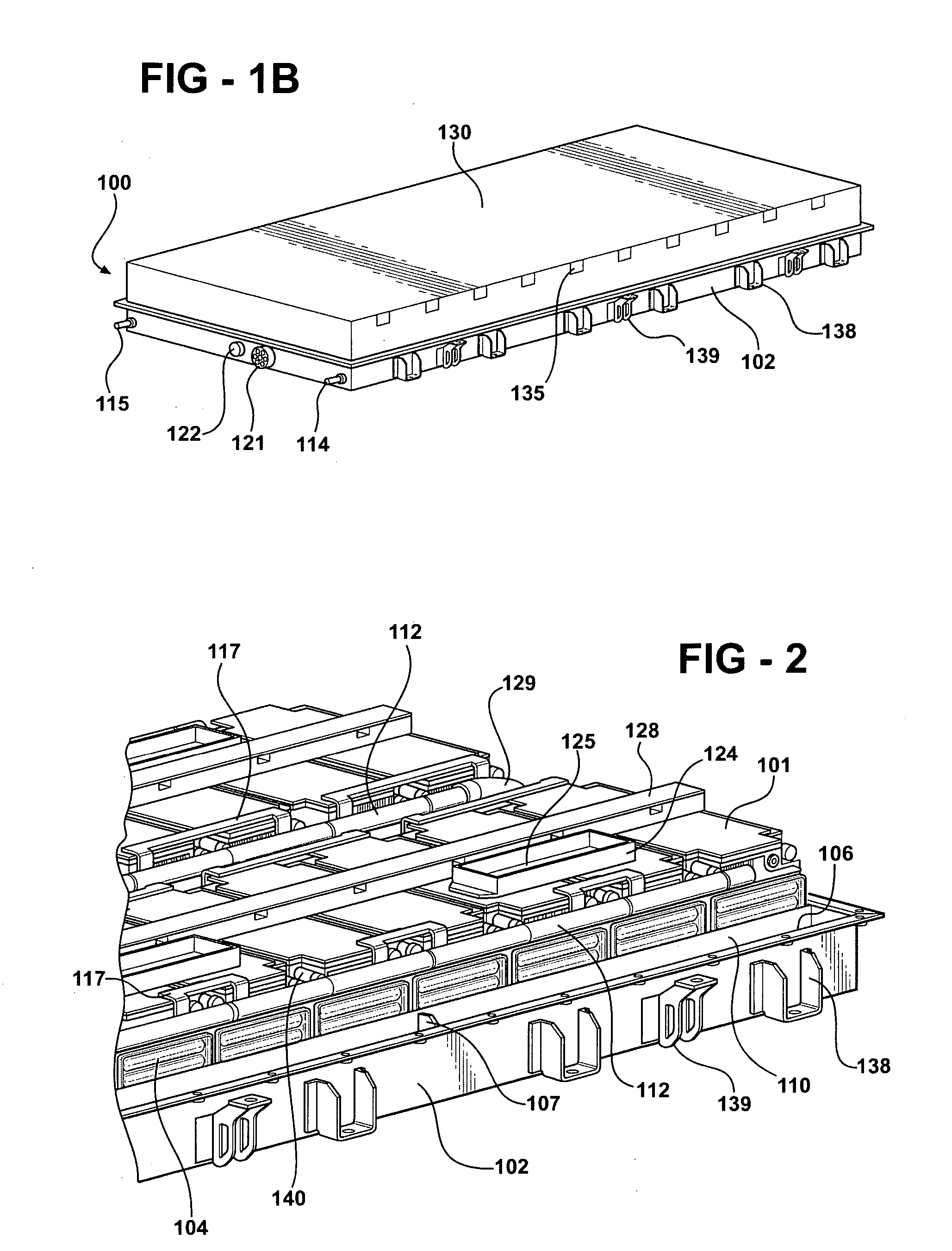Modular battery system
- Summary
- Abstract
- Description
- Claims
- Application Information
AI Technical Summary
Benefits of technology
Problems solved by technology
Method used
Image
Examples
Embodiment Construction
[0043] Disclosed herein is a modular battery system having a plurality of batteries, preferably monoblock batteries, interconnected electrically by bus bars and mechanically by rails and a cooling manifold. Referring to FIG. 1A, illustrated is an embodiment of a modular battery system, generally referred to as 100, wherein monoblock modules 101 are connected in series with bus bars 117. FIG. 1A illustrates a modular battery system comprised of twenty-four battery modules 101 electrically wired in series. The twenty-four battery modules 101 are arranged in a 12×2 array. The modular battery system may be set and secured in a system housing 102 with an integrated control unit (ICU) 103. The ICU 103 secures various components that may be utilized with a preferred embodiment of the system, as discussed below. Each module 101 is preferably secured between a pair of parallel rails. In this illustration, only the outside rail 110 is shown, however; for a view of both rails, refer to FIG. 5B...
PUM
 Login to View More
Login to View More Abstract
Description
Claims
Application Information
 Login to View More
Login to View More - R&D
- Intellectual Property
- Life Sciences
- Materials
- Tech Scout
- Unparalleled Data Quality
- Higher Quality Content
- 60% Fewer Hallucinations
Browse by: Latest US Patents, China's latest patents, Technical Efficacy Thesaurus, Application Domain, Technology Topic, Popular Technical Reports.
© 2025 PatSnap. All rights reserved.Legal|Privacy policy|Modern Slavery Act Transparency Statement|Sitemap|About US| Contact US: help@patsnap.com



